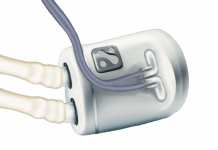- Surmodics’ drug-coated balloon to treat peripheral artery disease was found to be non-inferior to Medtronic’s market-leading IN.PACT Admiral device, meeting primary endpoints for safety and effectiveness in a head-to-head pivotal trial, Surmodics said Monday.
- The Surmodics device, called SurVeil, is coated with a significantly lower dose of the drug paclitaxel than Medtronic’s IN.PACT balloon.
- Needham analysts said the 12-month data, from Surmodics’ TRANSCEND study, could support FDA approval of the SurVeil balloon as soon as late 2021. The data were presented at the Leipzig Interventional Course 2021 virtual meeting.
The data comes as evidence supporting continued use of paclitaxel-coated devices accumulates, following a 2018 meta-analysis that found a higher risk of mortality at two years for patients treated with paclitaxel-coated balloons or paclitaxel-eluting stents in the femoropopliteal artery of the leg. The devices treat plaque build-up and deliver medication to help prevent the vessel from re-clogging.
The mortality signal in the meta-analysis prompted FDA to re-examine use of the devices and recommend new warning labels for the products, sold by companies including Boston Scientific, Cook Medical and BD, as well as Medtronic. Surmodics itself temporarily halted its pivotal trial in 2019 amid the safety concerns about the category of devices.
Now, the company is looking to distinguish itself from the competition with a device that reduces the drug dose. Surmodics said Medtronic’s IN.PACT Admiral balloon has a 75% higher drug load of paclitaxel than the SurVeil device. “The drug coating is visibly different from other DCBs and is designed to improve drug consistency and uniformity while reducing particulate and downstream embolization, which are critical considerations in this patient population,” Kenneth Rosenfield, co-principal investigator of the TRANSCEND trial, said.
The 446-patient study found 91.7% of those who received the SurVeil balloon showed freedom from device- or procedure-related death within 30 days and freedom from above-ankle amputation or CD-TVR within 12 months, compared to 89.6% of those treated with the IN.PACT Admiral balloon. The SurVeil group met its efficacy endpoint of primary patency of 81.7%, compared to 85.9% of the IN.PACT Admiral arm. The number of repeat procedures deemed clinically necessary by physicians did not differ between the products.
Abbott licensed the worldwide commercialization rights to Surmodics’ drug-coated balloon in February 2018. Surmodics said that when the device receives regulatory approval, it will be responsible for manufacturing the product and will realize revenue from sales to Abbott as well as a share of profits from sales to third parties. SurVeil gained CE mark approval in the European Union in June 2020.
Needham analysts noted Abbott has not yet launched the product in Europe, saying it is unclear if the company will await FDA approval before rolling it out globally. Needham estimated the global market for drug-coated balloons will reach about $250 million in 2021 and grow by about 10% annually for the next few years.




